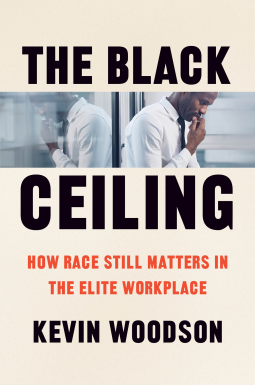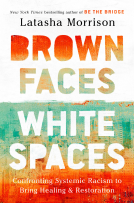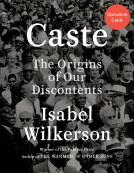
The Black Ceiling
How Race Still Matters in the Elite Workplace
by Kevin Woodson
This title was previously available on NetGalley and is now archived.
Send NetGalley books directly to your Kindle or Kindle app
1
To read on a Kindle or Kindle app, please add kindle@netgalley.com as an approved email address to receive files in your Amazon account. Click here for step-by-step instructions.
2
Also find your Kindle email address within your Amazon account, and enter it here.
Pub Date Nov 17 2023 | Archive Date Nov 15 2023
Talking about this book? Use #TheBlackCeiling #NetGalley. More hashtag tips!
Description
America’s elite law firms, investment banks, and management consulting firms are known for grueling hours, low odds of promotion, and personnel practices that push out any employees who don’t advance. While most people who begin their careers in these institutions leave within several years, work there is especially difficult for Black professionals, who exit more quickly and receive far fewer promotions than their White counterparts, hitting a “Black ceiling.”
Sociologist and law professor Kevin Woodson knows firsthand what life at a top law firm feels like as a Black man. Examining the experiences of more than one hundred Black professionals at prestigious firms, Woodson discovers that their biggest obstacle in the workplace isn’t explicit bias but racial discomfort, or the unease Black employees feel in workplaces that are steeped in Whiteness. He identifies two types of racial discomfort: social alienation, the isolation stemming from the cultural exclusion Black professionals experience in White spaces, and stigma anxiety, the trepidation they feel over the risk of discriminatory treatment. While racial discomfort is caused by America’s segregated social structures, it can exist even in the absence of racial discrimination, which highlights the inadequacy of the unconscious bias training now prevalent in corporate workplaces. Firms must do more than prevent discrimination, Woodson explains, outlining the steps that firms and Black professionals can take to ease racial discomfort.
Offering a new perspective on a pressing social issue, The Black Ceiling is a vital resource for leaders at preeminent firms, Black professionals and students, managers within mostly White organizations, and anyone committed to cultivating diverse workplaces.
Available Editions
| EDITION | Other Format |
| ISBN | 9780226828725 |
| PRICE | $26.00 (USD) |
| PAGES | 232 |
Available on NetGalley
Average rating from 7 members
Featured Reviews
 Scott W, Reviewer
Scott W, Reviewer
Woodson provides an important and easily understood contribution for those organizations trying their best to have more diversity and inclusion. Unlike many programs and workshops, he comes from a broad range of exploratory disciplines—cultural sociology, organizational dynamics and social psychology—to go deeper than surface symptoms that hinder Black professionals’ career advancement. Though limited to the legal and financial arenas, his conclusions can be applied to any industry, any organizational tier and any size of business.
He expands on the insight that the “ceiling” is enhanced by social alienation and stigma anxiety. Everyone will recognize the ensuing reactions when they’ve been in a culture clash. Even White people experience this if they’re honest when they travel from northern US to southern US or vice versa, or travel to other parts of the developing world. We will all have a tendency to develop the coping mechanisms of isolation, seeking out familiar people and situations and disparagingly assessing others without full understanding. Therefore, White people should be able to commiserate with their Black professional brothers and sisters. To overcome the alienation and anxiety, Kevin Woodson provides several effective options for organizations and individuals to dissipate the obstacles for Black professionals. These are not your usual prescriptive tropes you might see in other places.
I did spot one glaring omission in his recommendations. While acknowledging the inaccuracies, biases and damage inherent in performance reviews/appraisals, earlier in the book he fails to call for their “abolishment” as an idea to help Black professionals (and actually all professionals). Confirmation bias, recency bias, (and other prejudices), collaboration inadequacies, timing issues, rating/ranking policies and individual reviewer’s perspectives and preferences conspire to raise the level of inaccuracy and reviewer’s projections to a level of 90 percent. The person’s actual performance provides a mere ten percent influence to an appraisal of a year’s performance or particular project review. This problem is compounded when these faulty reviews are the basis for promotion, wage increases, and other “juicy” assignments that can propel a person’s career. If organizations take this problem to heart and develop different, simpler assessment techniques and reduce the enormous significance these assessments have, all professionals (and other categories of employees) will benefit. Assessed individuals could try to let the reviews not inflate or deflate their egos.
 Maya R, Reviewer
Maya R, Reviewer
4/5 stars
Woodson's work here is important for Black professionals around America. His extensive review of the "Black Ceiling" comes from the perspective of some Black professionals that are both for and against the idea that race affects their careers. It is important to note the various arguments about an issue that stems from a system of racism in America. As Woodson notes, this is a larger issue but workplaces can be aware of ways to help combat this issue. With a topic as controversial as this, Woodson does an excellent job of analyzing both sides of the argument defining new terms for Black professionals in mostly white spaces.
On a personal note, a lot of what was described by Woodson are thoughts and feelings I have had that I was unable to put a name to, or unaware I was feeling that way until I read this book. Being in elite spaces is tough for everyone but having the added anxiety of discrimination adds yet another barrier for Black professionals.
Thank you to NetGalley and Woodson for the opportunity.
Bravo, Dr. Woodson. This book is truly brilliant, exploring the nuanced impact of race in the realms of black community dynamics, global politics, and the broader workplace environment. It delves into the complexities beyond a surface-level understanding of how race shapes the experiences of employees. Through a combination of research, theory, and practical advice, the author skillfully navigates the reasons why comprehending the influence of race alone falls short in grasping the concept of the "black ceiling."
Introducing insightful terms like "racial discomfort," "stigma anxiety," and "social alienation," the author sheds light on the crucial factors of culture, comfort, and familiarity that contribute to the experiences of black individuals in elite workplaces. While the book often focuses on cases within the legal profession, its resonance extends across all industries, making it relatable to a broad audience.
Despite some formatting issues that could be refined, the book offers invaluable insights. I highly recommend reading it, as it not only mirrors personal and coworker experiences but also provides essential information for anyone entering college or the workforce.
Eye opening and insightful book fro Kevin Woodson. This book covers a very important topic in the workplace that we do not acknowledge.
I was times uncomfortable reading it, which is a good thing. This is a very important book to showcase the issues within the work place and feelings maybe people were not able to express before.
This book shines a light on why there are disparities in the workplace, including elite firms, because of race. It is an important book that raises additional systemic barriers beyond just racial bias. Diversity trainings offered by corporations only address implicit bias and does not at all address all of the other challenges facing black professionals. From the culture of white spaces, to pop culture and interests, to assignments and performance reviews, there are many hidden barriers that Woodson reveals and names. As a white person, I was sensitive to making sure that the remedies and responsibilities weren't placed on black professionals to fix and so I was glad to see the role those of us in leadership and human resources can play to address these barriers. This book is based on qualitative research and interviews and the examples and conclusions resonate for colleagues I have shared this book with. An important read.
Thank you to Netgalley and University of Chicago Press for an ARC and I left this review voluntarily.
“The Black Ceiling: How Race Still Matters in the Elite Workplace" by Kevin Woodson is a thought-provoking exploration of the persistent challenges faced by Black professionals in elite work environments. Woodson provides a compelling analysis of systemic barriers and sheds light on the nuanced ways race continues to influence career trajectories. With a keen blend of scholarship and personal narratives, the book offers valuable insights into the experiences of individuals navigating the corporate landscape. Woodson's examination of the "black ceiling" is both comprehensive and incisive, prompting important conversations about diversity, equity, and inclusion. This book is an essential read for anyone seeking a deeper understanding of the complexities surrounding race in the elite workplace and the ongoing work needed for meaningful change.
Readers who liked this book also liked:
Alia Hanna Habib
Business, Leadership, Finance, Nonfiction (Adult), Professional & Technical
Robert Williamson Jr.
Christian, Nonfiction (Adult), Religion & Spirituality
We Are Bookish
LGBTQIAP+, Romance, Sci Fi & Fantasy
Coco Morante
Cooking, Food & Wine, Health, Mind & Body, Nonfiction (Adult)
Keisha Lance Bottoms
Biographies & Memoirs, Nonfiction (Adult), Self-Help
Kelsey Barnard Clark
Cooking, Food & Wine, Entertainment & Pop Culture, Home & Garden
L.M Montgomery
Children's Fiction, Comics, Graphic Novels, Manga, Teens & YA


















